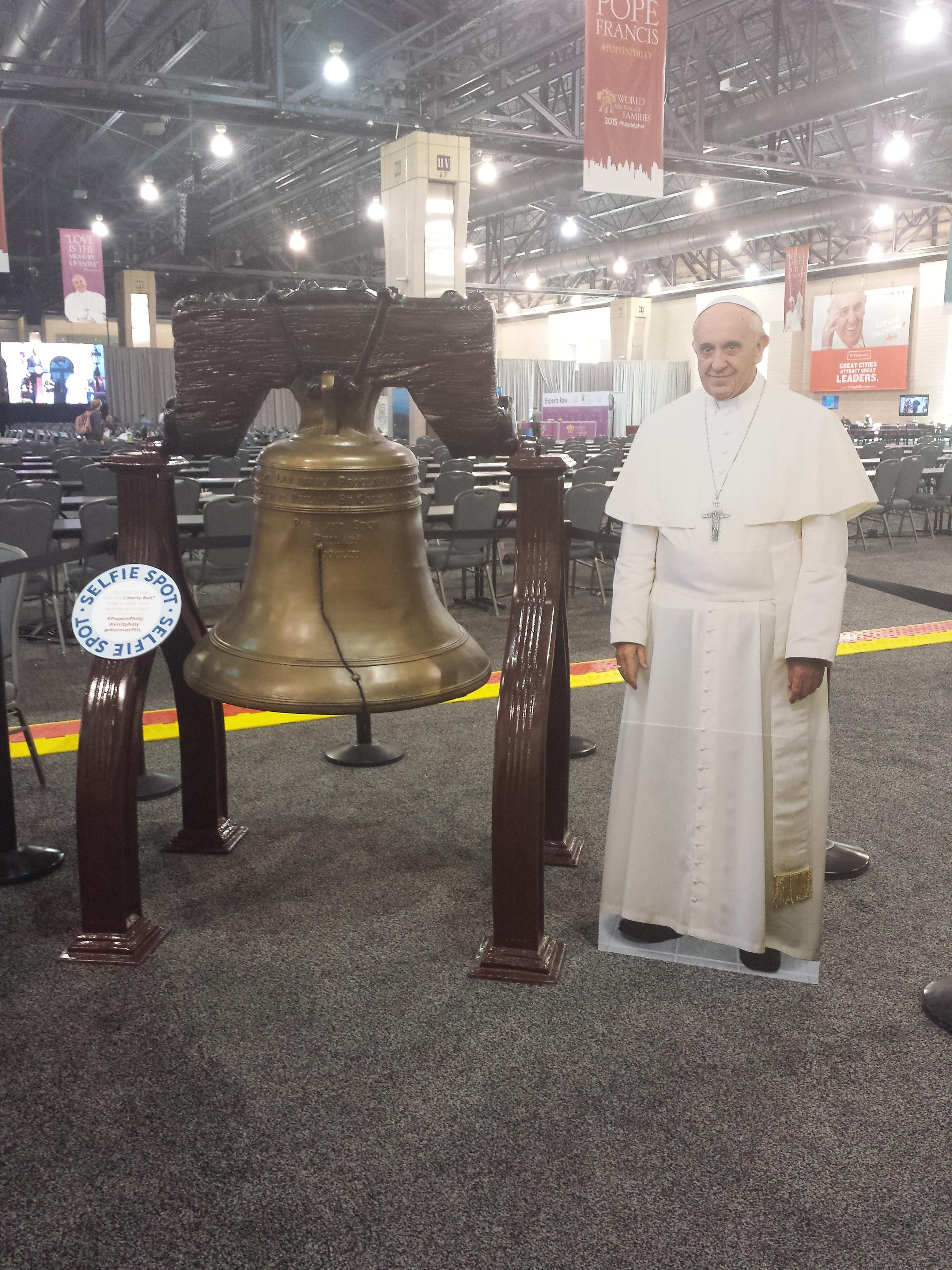On Saturday September 26, 2015 Pope Francis will speak at Independence Hall. When the Pontiff takes his place behind the Lincoln lectern, he is widely anticipated to address the topic of religious freedom, as well as immigration, and he may face protesters as well as the faithful.


When the Pope arrives on Saturday, it is unclear whether he will find demonstrators waiting along with the faithful. During his recent visit to Cuba, protesters were quickly removed from Plaza de la Revolucion. However, in Washington, D.C. Women’s Ordination Worldwide, a group that supports the ordination of women as Catholic priests staged a demonstration that ended only when seven protesters were arrested. The protest followed on the heels of the group’s larger meeting in Philadelphia this past week, but members have no plans for a similar event here.
Similarly, LGBT Catholics from Equally Blessed, also in town to attend the World Meeting of Families, will not demonstrate during the Pope’s visit. Like Catholics for Choice, Equally Blessed was denied use of Church space to hold its events, but quietly moved across the street to the Arch Street Methodist Church, which bore a welcoming rainbow flag on its edifice.
If protests occur in Philadelphia, they will likely be at Independence Hall. In the past two centuries since it entered into the American imagination as a site so symbolic it is often described in religious terms, the famed building has been the backdrop for many religiously motivated protests.

During the nineteenth century, the volatile mixture of politics and religion erupted in the Nativist Riots of 1844 during which thousands of Protestant protesters rallied in front of Independence Square before returning to riot again in a Catholic neighborhood. When city fathers called for a town meeting to end the sectarian fighting, they too made use of Independence Square as the likeliest rally point for a peaceful end to the fighting.
Demonstrations continued to occur around Independence Hall throughout the nineteenth century, most notably those by abolitionists and suffragists, but after the radical labor group, the Industrial Workers of the World (IWW), sought a permit in 1912, city officials closed the area to all but “patriotic” celebrations of a historical sort, preferring staid uses such as “Religious day” which kicked off the 1908 “Founder’s Week” a celebration of Philadelphia local history, with “the ringing of the bell at Independence Hall in unison with all the church bells and chimes in the city.” City squares, including the one outside Independence Hall, hosted open-air religious services. However, in 1947 the courts held the statute to be unconstitutional. The National Park Service, which assumed control of Independence Hall in 1956, did not prevent protests from taking place.
In more recent years, The Tibetian Associaiton of Philadelphia has stage candlelight vigils to highlight religious repression in Tibet, while A descendent of William Penn invoked “the birthplace of the Constitution and religious freedom,” while leading a protest against religiously motivated arrests in Japan.” Closer to home, a 2012 demonstrations at Independence Hall drew protesters who viewed the Affordable Care Act’s provisions for contraception as an infringement on religious liberty.

Reproductive rights and immigration seem the likeliest flashpoint for any protests that might develop in Philadelphia now that Catholics who disapprove of the Pope’s proclamations on climate change have already held their demonstration at the Independence Hall Visitors Center well in advance of his arrival in the city. While some participants decried the spiritual leader wading into temporal waters, other supporters framed their protest in religious terms, telling reporters that the Pope “is inspired in part by “pagan remnants” of “nature worship” that have crept into the church.”
According to the National Park Service, which issues permits for public gatherings at Independence Mall, only two permits were requested, and one has been withdrawn. However, protesters often appear without permits, and with the Pope expected to speak about immigration while at Independence Hall, Philadelphia could still see demonstrations around that issue, although perhaps not as elaborate as the 100 Women 100 Miles march that ended in Washington, D.C in the hopes that the Pope’s message of mercy towards immigrants might influence legislators who are stalled on immigration reform.


